The main marine research centers, the Government of the Balearic Islands and the Marilles Foundation have published the 2021 version of the Balearic Sea Report (IMB). The IMB basically gathers ecological indicators, such as the state of fish populations, the European paíno or endangered species. But it also includes important economic and social indicators, such as the level of investment in marine protected areas, employment generated in sectors related to the blue economy or human pressure on the islands. The report reviews several major chapters and provides salient data on the state of the sea on the islands.
1 Protected habitats
In 2016, 99% of the nacras of the Balearic Sea disappeared. Currently, a dozen live nacras have been located and controlled. Regarding the rock nacra, the report shows that Cabrera has one of the highest densities in the world.
2 Water quality

Emissary. Photo: Manu San Félix.
In 2020, 82% of the sampling points on island beaches have shown excellent quality. The highest number of sampling areas with sufficient and insufficient quality occurs in Ibiza (7%) and in Menorca (6%). The urban beaches of the Balearic Islands are the ones that tend to show a lower quality of bathing water.
3 Emblematic species
The Balearic Sea Report focuses on the turtle population. Between 1993 and 2020, 1,058 stranded turtles have been found in Balearic waters, 512 alive and 546 dead. It is striking that 160 eggs were laid in 2019, while in 2020 there were 340, more than double. Thus, in 2019 37 turtles were born, while in 2020 159 were born.
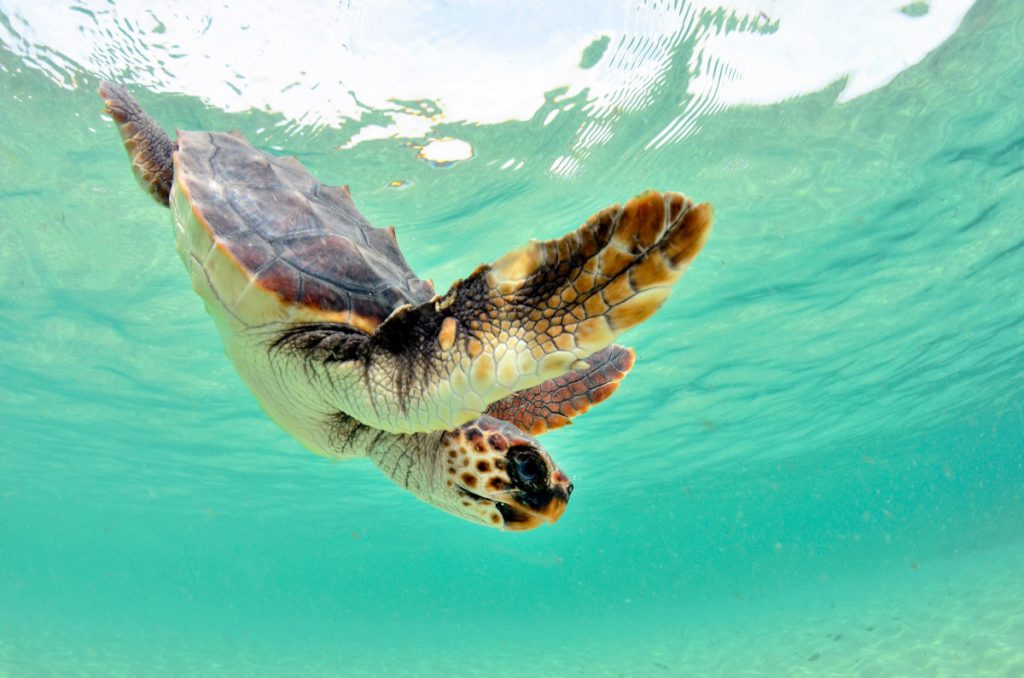
Marine turtle. Photo: Xavier Mas.
4 Global change
Sea level rise in the western Mediterranean has increased 1.32 mm / year over the last 134 years (with a cumulative increase of 17.7 cm during this period). But the acceleration of this rise has been accentuated in recent years. Projections show that the sea level could have risen between 57 and 75 cm by the end of the century. This would translate into a decline in the Balearic beaches of between 7 and 50 meters.
5 Social response
The report highlights that Observadores del Mar groups together 15 active projects and has a team of 98 researchers from 46 institutions from 15 different countries. Each project has an average of 360 followers who actively participate in collecting data and submitting observations. Since 2000, a total of 3,834 observations have been recorded in the Balearic Islands.
6 Pressures
88% of the sampled seabed areas present plastic waste. In particular, the Sierra de Tramuntana showed a high abundance on its seabed. Additionally, 45% of 40 different species (including fish, mollusks, and crustaceans) have ingested microplastics. From the report it can be deduced that the Balearic coast is one of the main areas of accumulation of plastics in the Mediterranean Sea.
For their part, desalination plants pose a potentially serious threat to marine ecosystems, especially to seagrass meadows. Between 1994 and 2019, the production of desalinated water in the Balearic Islands – and its brine discharges – has increased by 243%.
The wastewater treatment plants (WWTP) are another threat to the Balearic Sea. It is estimated that for the Balearic Islands as a whole, 70.2% of the total treated water could be reused, although only 37.7% is suitable for irrigation. Globally, there was a 1.6% non-compliance with the purification flow between 2016 and 2019.
7 Marine areas protected
In the Balearic Sea there are 7 types of Marine Protected Areas (MPAs) that account for 21.5% of the Balearic Sea protected. Data on marine reserves show that important changes can occur in just a few years, both in volume and density of fish. A marine protected area can be degraded or recovered very quickly.
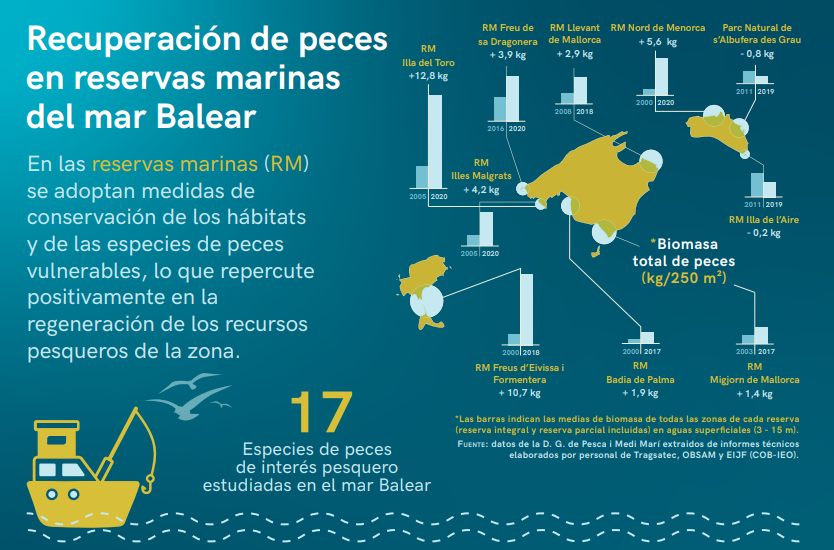
8 Fishing
The community’s professional fishing sector is in recession. Since 1950 the boats have been reduced by 78% and the crew by 90%. Professional fishing catches decrease between 2002 and 2020, from 3,900 to 2,400 tonnes, respectively. Similarly, the economic value associated with catches also decreases, returning in 2020 to the initial values of 18 million euros in 2002. For its part, the number of recreational fishermen has been increasing, going from 27,500 licenses in the year 2000 to 43,400 licenses in the year 2019.
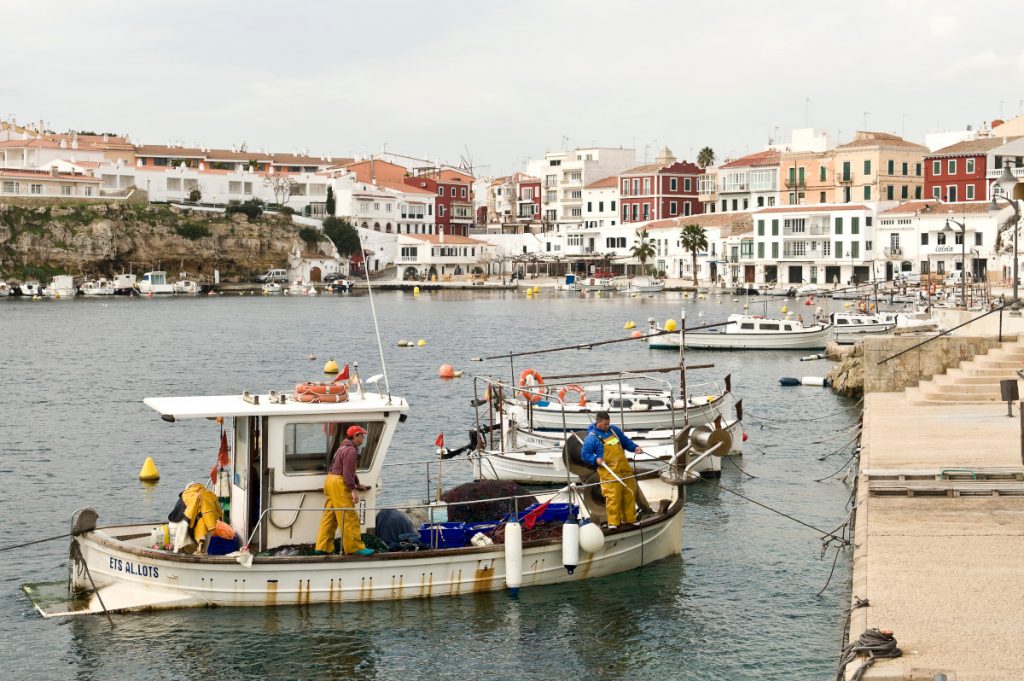
Photo: David Arquimbau.
The impact of the pandemic
The impact of COVID-19 during 2020 is clearly reflected on indicators related to pressures such as, for example, maritime transport, underwater noise, the use of beaches or the human pressure index. However, according to experts, it is still too early to determine if it has had a significant impact on some species or habitats. Those responsible for the report recall that the economic prosperity of the Balearic Islands is strongly linked to the state of its marine and coastal environment. Therefore, they say, economic recovery plans must also include funding for marine scientific research, without which it will not be possible to advance towards better conservation of the Balearic Sea.

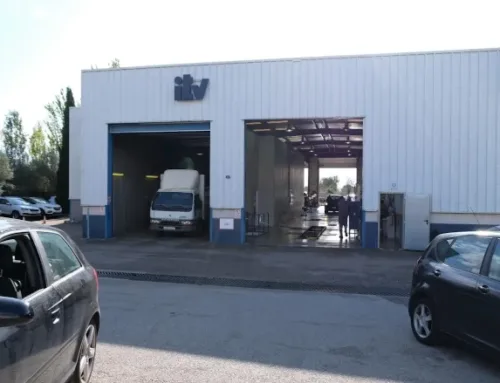
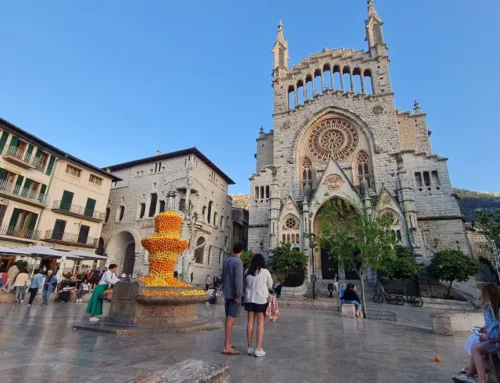
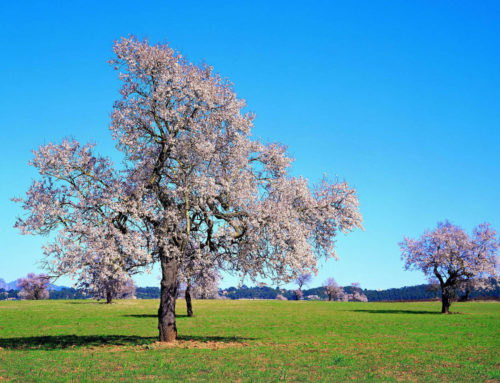

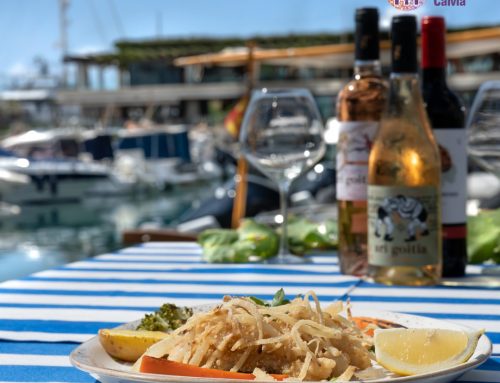

Leave A Comment